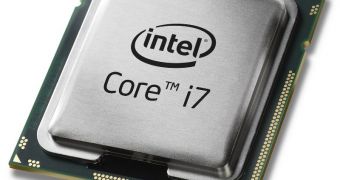Many enthusiasts have thought that the Sandy Bridge release will mark the beginning of the end for overclocking on Intel platforms, but a recent report comes to suggest that this won't actually be the case as Ivy Bridge and Haswell are expected to be much much easier to overclock than Intel's current chips.
This information came our way via VR-Zone that has published some details presented by Intel during IDF 2011 which focused on the overclocking capabilities of its upcoming processors.
The report suggests that with the arrival of Ivy Bridge, Intel will use a chip design that decouples the CPU clock from the rest of the components found on the chip, such as the integrated GPU or the PCI Express controller.
As a result, overclockers will have the possibility of raising the core and memory frequencies without having to worry about affecting the I/O and PCIe clocks.
Moving to Haswell, overclocking becomes even much more interesting as Intel stated that this architecture will add a series of new enthusiast-oriented features.
These include the possibility of setting the CPU core, GPU, memory, PCI and DMI ratios all independently from each other.
In addition, users will also be able to fine tweak the BCLK base clock available within the Lynx Point chipset.
All these features will be coupled with a new integrated voltage regulator circuitry that simplifies the platform design, while also delivering much more stable power, which will definitely help with overclocking.
When it designed the Sandy Bridge architecture, Intel decided to take a different route as far as overclocking is concerned and locked the BCLK of the CPUs.
This means that overclocking is no longer possible if the processor doesn't come with an unlocked multiplier.
Right now, only two of Intel's CPUs have such a multiplier, the Core i7-2600K and the Core i5-2500K, but a third of the chips that will be known as the Core i7-2700K is expected to arrive later in October.

 14 DAY TRIAL //
14 DAY TRIAL //